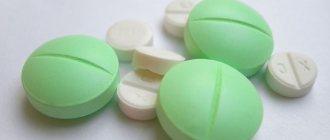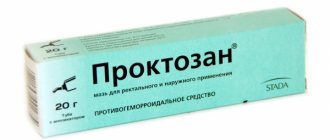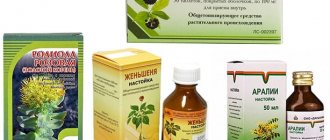What are antihypertensive drugs, mechanism of action
Antihypertensives, or otherwise known as antihypertensive drugs, are medications that lower blood pressure. They are mainly used for hypertension.
Blood pressure indicators depend on:
- the work of the heart muscle as the main pump of the circulatory system;
- kidney conditions;
- vascular tone, especially peripheral;
- total volume and quality indicators of blood.
Reasons for increased blood pressure:
- significant excess of normal cardiac output;
- increase in BCC - circulating blood volume;
- increased resistance in peripheral vessels;
- deterioration of kidney function, disturbances in the renin-angiotensin system.
The action of antihypertensive drugs is aimed at the main factors that determine blood pressure levels. The class of these drugs is characterized by significant diversity in composition, therefore, in the classification it is more common to take into account their specific focus. The mechanism of action of an antihypertensive drug is determined by what type in the classification it belongs to.
Rational combinations of antihypertensive drugs
Lecture transcript
XXVI All-Russian Educational Internet Session for doctors
Total duration: 20:10
Oksana Mikhailovna Drapkina, executive director of the Internet Session, secretary of the interdepartmental council on therapy of the Russian Academy of Medical Sciences: - It is with great pleasure that I give the floor to Professor Maria Genrikhovna Glezer. "Rational combinations of antihypertensive drugs"
00:10
Glezer Maria Genrikhovna, Doctor of Medical Sciences:
– Dear colleagues. Arterial hypertension is currently the No. 1 risk factor. In 2010, it was recognized by the World Health Organization as the No. 1 killer. It is high blood pressure that determines more than 50% of all cases of coronary heart disease and strokes.
What are the classes of drugs for long-term treatment of arterial hypertension. 8 classes. But we must first use the first 5 classes:
- diuretics;
- beta blockers;
- ACE inhibitors;
- sartans;
- calcium channel blockers.
Alone or in combination, these drugs are used to reduce the risk of complications.
There is a sufficient evidence base for these first five drugs. These classes of drugs may reduce cardiovascular morbidity and death.
What are the main pathophysiological mechanisms involved in increased blood pressure?
This is the activation of the renin-angiotensin system. Activation of the sympathetic nervous system. Increase in circulating blood volumes (changes in water and electrolyte balance).
Ultimately, these systems will lead to changes in intracellular calcium transport. The drugs that we have affect different stages of pathogenesis.
Beta blockers, sympatholytics, imidazoline receptor agonists - for increased activity of the sympathetic nervous system. Diuretics – for increased circulating blood volume, lipid metabolism disorders. Calcium antagonists – to change intracellular calcium transport. 3 groups of drugs (inhibitors, sartans and direct renin inhibitors) - on the activated rhinin-angiotensin system.
We know well from clinical practice that all patients with arterial hypertension are different. The contribution of each pathogenetic mechanism may vary from person to person. For some, an increase in circulating blood volume prevails. Some people have predominantly increased activity of the renin-angiotensin system. Some people (especially young people) experience an increase in the activity of the sympathetic nervous system.
It is clear that it is most often impossible to solve the problem with one class of drugs.
02:34
Athena Study.
More than 2,000 women in the Russian Federation were analyzed. Where hypertension was controlled, 2-component, 3-component or more drugs were more often used to treat high blood pressure.
Where there was no control (in fact, this was the majority), either these patients were not treated at all, or monotherapy was used. This is further evidence that different classes of drugs need to be combined in order to achieve blood pressure goals.
Categories of patients most likely to require combination therapy:
- persons who have a significant increase in blood pressure (above 160/100 mm Hg);
- patients with diabetes mellitus (DM);
- people who have certain lesions of organ systems. For example, kidney damage;
- left ventricular hypertrophy (LVH);
- people who smoke, are obese, have sleep disordered breathing.
Combination therapy is the key to success in achieving the goal (based on the pathogenetic mechanisms that I have already mentioned and the complications that often occur in patients).
What do we call a goal? The best evidence to date is that the goal is to achieve target blood pressure values.
In September 2010, there were some changes to the target values. Now, regardless of the degree of risk, they try to keep the pressure below 140 and 130. Up to 140 mm Hg. Art. systolic and 90 – 80 mm Hg. Art. by diastolic.
Not a single large study (probably how they were structured) has proven that a decrease of less than 130 and 80 mm Hg. Art. provides an additional reduction in morbidity and mortality. At the same time, a decrease from 130 is a very difficult moment, requiring a lot of effort and financial costs.
In persons over 80 years of age, based on data from the HYVET study, target values for systolic pressure are set at less than 150 mmHg. Art. Low numbers remain with significant proteinuria.
05:04
A meta-analysis of 147 studies in older people aged 60–69 years showed that while one standard-dose drug reduces the risk of coronary heart disease by 25% and stroke by 35%, then a combination of three drugs at half the dosage reduces the risk of developing both coronary heart disease and stroke is almost twice as high.
A very interesting analysis was published in 2009. A 2-drug combination has been shown to be 5 times more effective in lowering systolic blood pressure (SBP) than doubling the dose of either drug class. Be it beta blockers, diuretics, inhibitors, calcium antagonists. This is proof that it is combination therapy that allows you to achieve the desired values.
In addition, combination therapy can undoubtedly lead to a faster, more pronounced reduction in blood pressure.
The VALUE study clearly showed: if during the first month from the start of treatment the pressure decreases by more than 10 mm Hg. Art., then the number of fatal/non-fatal cardiovascular events, strokes and death from all causes becomes significantly less than in those people who did not achieve a reduction during the first month.
06:29
The second point that you should pay attention to: you should still strive to achieve the target numbers within 6 months. This is less than 140 mmHg. Art. Then all outcomes, including fatal events, heart attacks, strokes, deaths from all causes, and hospitalization will be significantly lower.
In my opinion, how should the decision-making process proceed when treating patients with arterial hypertension.
Certainly. We can start with monotherapy. This ensures the safety of treatment for our patients. If you see a person for the first time and you do not know what the reaction will be to antihypertensive therapy, you can start with monotherapy.
But you don’t need to go further in this vicious circle: you reached the maximum increase in dose, you became convinced that it was ineffective, you changed the drug, and so on. Patients stop this treatment, they leave the doctor.
Correct decision-making process: Tried monotherapy. We realized that it was quite effective and safe, and switched to combination therapy. We are moving further along the path of increasing doses of combination drugs. This is the principle I preach.
Plus one: the patient came - the treatment was not effective enough - the next class of drugs was added. If something else doesn’t suit you, the next class is added. Then you will be more likely to succeed.
When it comes to combination therapy, they always say: “This is polypharmacy, it is bad for patients, and so on.” Correct, because combination therapy must undoubtedly be rational.
What is rational therapy? This is when the effectiveness of treatment increases, while the incidence of side effects decreases.
This can lead to an increase in efficiency. We use different classes of drugs, influence different parts of the pathogenesis of the disease and eliminate the activation of counter-regulatory systems. If you use drugs in smaller dosages, then dose-related side effects may, of course, be reduced.
The side effects of one of the components can be eliminated by using another component.
08:51
Recommended combinations of drugs for hypertension.
Diuretics plus inhibitors or sartans. Best time to use: Where there is a high risk of heart failure.
Beta blockers and dihydropyridine calcium antagonists. When is it best to use: for ischemic heart disease.
Metabolically neutral class of drugs, sartan inhibitors, calcium antagonists. In persons at high metabolic risk.
Today, this is probably how one can imagine rational combinations. It's a diuretic plus something. Anything – these are inhibitors or sartans.
Another type of combination. Calcium antagonists plus ACE inhibitor or calcium antagonists plus sartans. Dihydropyridine calcium antagonists are used with beta blockers in patients with coronary artery disease.
Currently, the combination of diuretics plus calcium antagonists is considered irrational because this combination almost doubles the risk of myocardial infarction. Diuretics plus beta blockers had the best effect in this case.
The final picture looks like this: 1) calcium antagonists plus inhibitors or sartans and 2) diuretics, inhibitors and sartans.
The slide shows the recommended combinations of antihypertensive drugs in a trapezoid.
This trapezoid is considered the most rational today.
I took the liberty of slightly modifying the picture shown in the European recommendations. I drew a triangle. At the top I put a group of drugs that inhibit the activity of the renin-angiotensin system (RAS) plus diuretics or plus calcium antagonists. Or the three of us together in the center of the class. There will be effective treatment.
What is the rationale for saying that a combination of diuretics, inhibitors or sartans is an effective and rational combination. It is known that diuretics and inhibitors (sartans) are powerful antihypertensive drugs with pronounced organoprotective properties that can reduce the incidence of morbidity and mortality in arterial hypertension (AH).
The enhancement of the hypotensive effect is due to the fact that conditions are created for the most pronounced action of both components. The activation of counter-regulatory mechanisms is eliminated: diuretics reduce sodium levels, thereby stimulating the production of renin. This leads to a more pronounced antihypertensive effect of drugs that inhibit the activity of the angiotensin system.
At the same time, inhibitors or sartans, by reducing the production of aldosterone, reduce the excretion of potassium from the body, which is always not good when prescribing diuretics. In addition, inhibitors and sartans have a beneficial effect on purine metabolism and reduce the severity of hyperuricemia.
11:50
The combination with diuretics allows you to achieve the same reduction in blood pressure 4 weeks earlier compared to monotherapy with any of the drugs. This leads to the fact that better treatment results can be achieved.
ACE inhibitors (in general, probably the same with sartans) are drugs with pronounced organotensive properties. They influence vascular remodeling, reducing or normalizing the ratio between the lumen of blood vessels and the intima-media complex. This is very important for persistently maintaining blood pressure at normal levels and avoiding crises. The data are given for one of the long-acting ACE inhibitors - the drug Lisinopril. In our country it is often used in the form of the drug “Diroton”. Normalization of the vascular ratio in arterial hypertension.
Indicators related to heart function improve. In particular, improving the diastolic function of the heart. The ratio of peak E to peak A returns to almost normal. The time of isovolumic relaxation improves, the diameter of cardiomyocytes decreases. It is very important that myocardial fibrosis is reduced in patients with arterial hypertension. This is one of the first steps to developing a particular form of heart failure. Heart failure, which is caused by hypertension with preserved ejection fraction.
13:27
ACE inhibitors are known to work very well in obesity because the activity of the renin-angiotensin system is increased in obesity. Each fat cell produces the angiotensin gene in an amount equal to 70 liver cells.
One of the first studies that was conducted demonstrated that lisinopril was effective in approximately 60 patients. Hydrochlorothiazide (HTC) is less effective. The most important thing is that this effect is detected at doses of “Lisinopril” of 10 mg, and “Hydrochlorothiazide” - 50 mg. The side effects of Hydrochlorothiazide may already be quite pronounced.
A very interesting study was conducted in Russia - the Desire study. This study showed that the use of lisinopril can normalize the abnormal daily blood pressure profile. In particular, Lisinopril in women halved the night-picker type when there is a sharp increase in blood pressure at night.
Another achievement that was shown in this study. The use of the drug in the evening allows to normalize blood pressure to a greater extent and reduce the disturbed profile. This is important because night-pickers have a higher incidence of strokes, adverse events, and so on.
Combination with diuretics. Diuretics are one of the most important classes of drugs for the treatment of arterial hypertension. Returning to the Athena study, I would like to say that the difference is in the prescription of drugs where it was ineffective: diuretics were used less often. All other classes were used approximately equally. If diuretics are not prescribed, then it is even difficult to say that something is effective or ineffective.
15:22
Two studies: UKPDS and LIFE. In the UKPDS study, the target blood pressure was 160/90 mmHg. Art. 60% of patients were already on diuretics. In the LIFE study, where the target numbers were 140/90 mmHg. Art. 90% of patients required diuretics.
In our country, the use of diuretics is somewhere around 30%. This is not a sufficient purpose. According to the LIFE study, people who received diuretic drugs had a 30-40% lower risk of various adverse events (cardiovascular death, heart attack, stroke), and a 45% lower overall mortality rate. This is a very important class of drugs that should be used in combination therapy.
I'll say it again. We can say that hypertension is resistant to treatment if a combination of three antihypertensive drugs prescribed in adequate dosages does not reduce blood pressure, but one of these drugs is a diuretic. Thus, this is a very important way to achieve target blood pressure values.
The use of ready-made combination forms is an easier path to success in treating patients with arterial hypertension.
Where hypertension was controlled, a higher percentage of cases used preformed combination dosage forms than in groups where there was no sufficient effect.
I want to show you one more study. Where a combination of Lisinopril and Hydrochlorothiazide was used (in our country, the drug Co-Diroton), patient adherence to treatment was higher than when Lisinopril and Hydrochlorothiazide were used in 2- x different tablets.
The creation of finished dosage forms follows the path of rational combinations, that is, a diuretic plus an ACE inhibitor, or a diuretic plus sartan. Or a combination based on calcium antagonists, to which inhibitors, sartans or beta blockers are added in the treatment of patients with coronary heart disease.
Now a drug has been released that contains a combination of 3 groups. This is Amlodipine plus Valsartan plus Hydrochlorothiazide. This is the right direction: when you have selected certain dosages, then you can already use ready-made combined forms.
In a nutshell about the combination of calcium antagonists with inhibitors or sartans. Calcium antagonists are good at reducing the risk of stroke, inhibitors are good at reducing the risk of myocardial infarction. This provides a reduction in the risk of major cardiovascular events.
18:14
Advantages and disadvantages of mono- and combination therapy for arterial hypertension.
Of course, if you use combination therapy, there is always a higher response rate. This is a very high possibility of dose titration, because you can take a quarter of a tablet from one package, a full tablet from another, and so on. The incidence of side effects is lower if we use rational combinations.
But it becomes difficult to accept. Patients with hypertension will not use anything that is complicated. As soon as the necessary dosages have been selected, you need to switch to fixed combinations, which has an advantage in absolutely all positions.
In conclusion, I want to say what rational combination antihypertensive therapy is. This is an impact on different parts of the pathogenesis of hypertension and elimination of the activation of counter-regulatory mechanisms. Based on this, the effectiveness of treatment increases. When it is effective, people will be more committed (commitment increases).
A good combination is a decrease in the frequency of side effects - which means an increase in adherence. Increasing adherence means increasing the effectiveness of treatment.
Let's look at the second part of this circle. Increasing efficiency, increasing adherence means decreasing cost. Any change in therapy entails, of course, an increase in the cost of treatment. And when it’s not so expensive, people will be more committed. They will better follow the doctor's orders. You should always think about this.
Thank you for your attention.
Oksana Drapkina: Thank you very much, Maria Genrikhovna.
Indications for use
The main indication for the prescription of antihypertensive drugs is hypertension. This pathology is characterized by a persistent increase in blood pressure above 140/90, which cannot be relieved without the use of antihypertensive drugs.
The primary form of arterial hypertension is associated with:
- kidney diseases;
- endocrine disorders;
- damage to the central nervous system;
- vascular damage.
The emergence and development of hypertension is often accompanied by obesity, atherosclerosis, and old age. It should be taken into account that blood pressure increases with age.
This is usually associated with a deterioration of the condition due to narrowing of the vascular lumen by atherosclerotic plaques. As a result, resistance in the blood vessels increases significantly, which leads to increased blood pressure. Antihypertensive drugs do not treat hypertension; they “bring down” high blood pressure.
This must be done to prevent the occurrence of such severe pathological conditions as:
- stroke;
- myocardial infarction;
- hypertensive crisis.
Hypertension also provokes the occurrence of heart failure. It should be borne in mind that an increase in blood pressure is not always an indicator of hypertension. Sometimes, for example, blood pressure rises in the morning, especially if you eat heavily at night or drink kefir, as well as other products that increase gas formation in the intestines.
As a result, pressure occurs on the diaphragm, which leads to disruption of the heart and increased blood pressure. But don’t immediately grab the pills. In this case, it is recommended to take a walk, and the pressure will return to normal.
Drug combinations
Combined drugs for arterial hypertension, which contain several active substances, are divided into groups:
- Beta blockers and calcium antagonists - with this combination, blood pressure returns to normal very quickly, and the prolonged action of the medications helps prevent sudden surges in blood pressure;
- ACE inhibitors with diuretics are the most successful combination. When taking these medications, the heart's resistance to any stress increases, swelling is relieved, the condition of the vascular walls improves and blood pressure decreases;
- Diuretics with angiotensin receptor blockers are not used as often as other combinations, but are no less effective. During treatment, the tone of the vascular walls improves, swelling is relieved, heart rhythm is restored (if there are disturbances) and blood pressure decreases.
Combination group drugs are prescribed for the systematic treatment of hypertension. As a rule, they are not used to relieve a hypertensive attack.
Combination drugs are suitable for those who are conscious about their health and undergo planned therapy
Contraindications, side effects
It is recommended to adhere to the treatment regimen prescribed by your doctor. You cannot take different pills for high blood pressure, as this increases the side effects and has a detrimental effect on the functioning of the kidneys, which further aggravates the situation with blood pressure.
Many antihypertensive drugs must be taken constantly, for life, which can have a bad effect on health if the dosage and regimen are not followed. The possible cumulative effect must also be taken into account. Therefore, you should regularly consult with your doctor to minimize the possibility of side effects.
| Table of absolute and possible contraindications to the use of antihypertensive drugs | ||
| Groups of antihypertensive drugs | Absolute contraindications | Relative (possible) |
| ACE inhibitors | Pregnancy Hyperkalemia Bilateral stenosis of the renal arteries. Angioedema | Women of childbearing age |
| Calcium antagonists | Severe left ventricular failure. Atrioventricular block | Tachycardia Heart failure |
| Beta blockers | Atrioventricular block Asthma | Patients with pulmonary insufficiency. Reduced glucose tolerance |
| Diuretics | Gout | Hypercalcemia Hypokalemia Pregnancy |
| Sartans (angiotensin receptor blockers) | Bilateral renal artery stenosis Hyperkalemia Pregnancy | Women of childbearing age |
If one antihypertensive tablet is prescribed, it should be taken at night to reduce the likelihood of side effects.
Benefits of combination drugs for the treatment of hypertension
All medications intended to lower blood pressure are prescribed by a doctor individually based on the results of the examination after determining the degree and type of the disease. When selecting a treatment regimen and prescribing medications, the specialist takes into account possible side effects and contraindications in order to reduce risks to the patient’s health. Combination therapy for arterial hypertension involves the use of drugs from different groups. They affect various mechanisms of disease development and target organ damage.
The complex effect on the body of a hypertensive patient helps reduce the dosage of medications and speed up recovery. The main advantages of combined treatment of hypertension:
- Strengthening the effectiveness of all medications.
- High performance.
- Reducing the likelihood of side effects.
- Ease of use due to prolonged action.
- In addition to lowering blood pressure, the patient’s genitourinary, cardiac, and circulatory systems improve.
- The set of components is selected so as to immediately affect several receptors that affect blood pressure surges.
Classification of antihypertensive drugs
Drugs for lowering blood pressure are divided into 2 groups, which in turn are divided into subgroups. This multi-layered division of the classification is due to the wide variety of this type of medicine.
First line drugs
The most common and largest group.
The first line is in turn divided into 5 groups:
- calcium antagonists;
- diuretics;
- ACEI;
- angiotensin receptor inhibitors (sartans);
- beta blockers.
Drugs of this line are prescribed to most patients with hypertension.
Second line drugs
The second line includes:
- alpha-blockers;
- direct acting vasodilators;
- rauwolfia alkaloids.
Medicines in this line are more affordable, but have many side effects.
Valid combinations
For long-term use, several antihypertensive drugs are often prescribed in the form of combination treatment.
The above classification of antihypertensive drugs describes the main mechanisms of action of each group, and knowing which hypertension predominates in a particular patient, it is advisable to use a suitable complex of antihypertensive drugs.
It is necessary to avoid the simultaneous use of hypertensive drugs and drugs with a similar effect from other groups.
The following combinations help reduce blood pressure:
- ACE inhibitors + diuretics;
- calcium antagonists + beta blockers;
- diuretic + diuretic.
ACE inhibitors
The group name “ACEIs” stands for “angiotensin-converting enzyme inhibitors.” These are quite effective drugs for lowering blood pressure, although there is a more modern option - sartans.
Taking an ACE inhibitor prevents the formation of angiotensin II, which narrows the arteries, leading to an increase in blood pressure. Due to drug control of this process, peripheral vascular resistance is reduced and blood pressure is normalized. ACE inhibitors can be used for heart failure, as they do not have a significant effect on the functioning of the heart.
Side effects:
- hyperkalemia;
- dry cough;
- angioedema (very rare).
Antihypertensive drugs (list of group representatives and ACEs):
- Captopril - dosage up to 100 mg/day;
- Enalapril - up to 40 mg/day;
Enalapril is a vasodilator medication that hypertensive patients take every day. - Moexipril is used for kidney diseases, dosage up to 30 mg/day;
- Trandolapril - 1–4 mg, once.
The drugs begin to act immediately after administration. Within a few days after starting therapy, the pressure stabilizes.
List of effective latest generation products
In each group, you can identify the most popular representatives with minimal side effects. The ideal would be a combination of two antihypertensive drugs with different mechanisms of action in minimal doses.
There are several modern and frequently prescribed antihypertensive drugs:
- Lisinopril (angiotensin-converting enzyme inhibitor). Long-lasting. Taking 10-20 mg is sufficient for most patients. Reduces blood pressure, as the load on the muscular wall of blood vessels is reduced. A possible side effect is a dry, persistent cough; if this occurs, the drug should be discontinued. Not prescribed for certain kidney diseases.
- "Candesartan" (angiotensin receptor blocker). A new antihypertensive drug from the sartan group that effectively reduces hypertension. Effective dosages: 8-32 mg per day, a single dose is sufficient. Contraindicated in case of hyperkalemia (increased potassium levels in the blood).
- "Felodipine" (dihydropyridine calcium antagonist). Reduces systolic (cardiac) output, and therefore lowers blood pressure. It is taken at a dose of 2.5-10 mg per day with monitoring of diuresis (volume of daily urine).
- Nebivolol (cardioselective beta blocker). Like their analogues, these cardioselective drugs reduce the force of heart contractions. A single dose of 5-10 mg is sufficient. It is important to monitor blood pressure after administration.
- Indapamides (thiazide-like diuretics). These are the next most frequently prescribed drugs for ACE inhibitors. They increase the volume of urine excreted, thereby reducing the volume of blood and its pressure on the blood vessels. Allowed 1.25-5 mg of drugs per day with careful calculation of diuresis.
Diuretics
The list of antihypertensive drugs for the complex treatment of hypertension often includes diuretics (diuretics). Diuretics stimulate urination and remove water from the body. As a result, the total volume of circulating fluid decreases, cardiac output decreases and blood pressure normalizes.
Since most antihypertensive drugs retain water, the use of diuretics is justified in many cases, despite the side effect in the form of leaching of necessary electrolytes from the body.
Diuretics are divided into 4 main groups:
- thiazide (Hypothiazide - up to 50 mg/day) - often used for hypertension, but are ineffective and also contraindicated in kidney disease;
- thiazide-like (Indapamide) – up to 5 mg, once;
- loop (Furosemide - dosage can reach 400 mg/day) - used for acute conditions, heart failure, and renal failure;
- potassium-sparing (Veroshpiron - 25 mg) - capable of removing sodium from the body and retaining potassium, contraindicated in kidney disease, used in combination with other types of diuretics.
Uncontrolled, constant use of diuretic medications provokes the leaching of potassium and magnesium from the body, which are needed to maintain normal blood pressure levels. In this case, it is necessary to additionally take vitamins with these minerals.
Diuretics: list of drugs
Diuretics (clickable list of drugs)
Below is presented in table form the classification of diuretics and a list of drugs most commonly used in therapy and cardiology to combat hypertension.
Diuretics with moderate activity | Highly active diuretics | Combination diuretics | ||
Thiazide diuretics | Nonthiazide diuretics | Sulfamides | Potassium sparing diuretics | Triamterene 25+hydrochlorothiazide 12.5:
|
| Hydrochlorothiazide (Borsch HFZ) 25 mg Hypothiazide (Sanofi) 25, 100 | Xipamide (Woerwag Pharma) 10,20, 40 mg | Furosemide:
| Aldosterone antagonists:
| |
Indapamide:
| Torasemide:
| Eplerenone:
| ||
Ethacrynic acid:
| ||||
Beta blockers
The drugs are used if hypertension develops against the background of cardiac disorders, such as tachycardia, arrhythmia. As a result of the blocking effect of these drugs on beta-adrenergic receptors, heart rate decreases, so they are not recommended for use in bradycardia.
Beta blockers are divided into 2 groups:
- cardioselective;
- non-cardioselective.
Cardioselective drugs selectively affect only blood vessels and the heart.
These include:
- Bisoprolol - dosage from 2 mg/day;
- Atenolol - up to 100 mg/day;
- Metoprolol - daily dosage can reach 200 mg.
Cardio-non-selective:
- Labetalol - up to 1200 mg/day;
- Propranolol (Anaprilin) - 40–240 mg/day;
- Carvedilol - 12 mg.
Cardiononselective antihypertensive drugs differ in that they act on beta-adrenergic receptors of both the heart and other internal organs.
Therefore, they have a significant number of contraindications, such as:
- diabetes;
- bronchial asthma;
- lung diseases, including COPD.
If you have a history of these diseases, you should first consult with your doctor before taking it.
Peripheral drugs
Peripheral drugs include ganglion blockers, sympatholytics, and adrenergic receptor blockers.
- Ganglion blockers are drugs that cause a block of sympathetic nerve ganglia. This leads to rapid expansion of blood vessels and a noticeable decrease in pressure. This group includes Pentamini Benzohexonium. Often they cause side effects such as tachycardia, a feeling of dry mouth, orthostatic collapse (a rapid drop in pressure with a sudden change in posture from a sitting to a vertical one). The drugs are rarely used, mainly during hypertensive crisis and operations;
- Sympatholytics are drugs that suppress the release of norepinephrine by nerve cells. They cause a weakening of venous and arterial resistance and vasodilation. Reserpine and Guanethidine belong to this group. They are used as additional to the main therapy, the effect appears 1-2 weeks after the start of treatment. Side effects include depression of the nervous system (drowsiness, depression), gastritis, nasal congestion;
- Drugs that block adrenergic receptors. These substances are divided into the following significant groups of compounds: Alpha adrenergic blockers. The drug Phentolamine immediately blocks A1 and A2 receptors, counteracting the effects of adrenaline and norepinephrine. This action causes rapid expansion of venules and arterioles, which soon reduces pressure. Used to identify secondary hypertension that occurs against the background of pheochromocytoma or Raynaud's disease. Prazosin and doxazosin selectively block A1 receptors, causing vasodilation and reflex tachycardia;
- Beta-blockers. Numerous drugs of this type occupy a leading place in the treatment of hypertension. Non-selective beta-blockers (Propranolol) block beta-1 and beta-2 receptors, selective (Atenolol, Bisoprolol) block only beta-1 receptors, acting only on the heart. The antihypertensive effect of these drugs is due to a decrease in cardiac output due to blockade of beta-1 receptors, a decrease in the action of the sympathetic system due to blockade of beta-2 receptors and inhibition of renin secretion by the kidneys;
- Alpha-beta blockers (in particular, Labetalol, Carvedilol). They cause a long-term decrease in pressure due to the block of all types of receptors at once. They also act as antioxidants and reduce the level of “bad” cholesterol in the blood. Used to treat hypertension and hypertensive crises;
- Drugs that reduce the influence of the renal renin-angiotensin system (abbreviated as RAAS)
The renin-angiotensin system is a special renal pressure control system, increased activity of which leads to worsening hypertension. Specialized kidney cells produce the substance renin, under the influence of which, as a result of several chemical reactions, angiotensin 1 and angiotensin 2 are formed successively. Angiotensin 2 has a serious vasoconstrictor effect and also increases the production of the hormone aldosterone, which increases blood volume.
Means that change the activity of this system include:
- ACE inhibitors (specialized angiotensin-converting factor). These include Captopril, Enalapril, Perindopril. Due to the action of these drugs, the production of angiotensin 2 is reduced, the blood vessels dilate, and the production of aldosterone decreases, which leads to a decrease in blood volume. These drugs are used for arterial hypertension and congestive insufficiency. Captopril is usually taken in tablet form and lasts for 4-8 hours. Enalapril lasts longer, 24 hours or more. Side effects of the group are dry cough, headache, protein in the urine, skin rash;
- Vasopeptide inhibitors3. The drug Omapatrilat is an innovative drug for the treatment of hypertension. Its antihypertensive effect is due to inhibition of the action of enzymes that are responsible for the production of angiotensins and restoration of the balance of pressure regulation. It acts for more than 24 hours and is characterized by the least side effects among other drugs that affect the activity of the RAAS;
- Angiotensin receptor blockers. These include Losartan, Valsartan. The drugs block the effect of angiotensin 2 on vascular receptors and prevent their narrowing. They are well tolerated by any patient, and therefore they are used for long-term treatment of hypertension.
Calcium antagonists
Antihypertensive drugs (list of the main representatives of group 3 calcium antagonists):
- phenylalkylamine derivatives (Verapamil - up to 480 mg/day) - use with caution, may provoke bradycardia;
- benzothiazepine derivatives (Diacordin) – dosage from 120 mg, side effect similar to Verapamil (bradycardia);
- dihydropyridine derivatives (Nicardia, Zanidip, Norvasc) - drugs have a pronounced vasodilator effect, so they can cause hyperemia (redness) of the face, swelling of the extremities, and provoke a headache.
Calcium antagonists act effectively, lower and stabilize blood pressure in hypertension due to their vasodilatory effect. The disadvantages include significant side effects.
Rules for prescribing drugs
In order for the treatment of arterial hypertension with drugs to produce results, you need to follow a number of recommendations:
- Therapy should begin with non-drug methods. To do this, you need to reduce body weight, stop smoking and drinking alcohol, and reduce the amount of salt and animal fats in your diet. You should also regularly exercise.
- Initially, it is recommended to take a small dose of the drug, which has a minimum number of side effects.
- If the selected dosage is well tolerated, it is gradually increased until the desired result is obtained.
- It is often necessary to combine several antihypertensive medications at once. Today, treatment regimens have been invented that include a number of drugs.
- If the second drug does not work or has an adverse effect on the body, it is replaced with a substance from a different category. However, the first remedy remains the same.
- Preference should be given to agents that have a long-term hypotensive effect. This is much easier for humans and eliminates pressure drops.
In the human body, blood pressure is regulated in different ways. They are equally important in the homeostasis system.
Important: Pressure increases as a result of an increase in vascular resistance, the amount of circulating blood and minute volume of blood. Drug treatment is aimed at correcting one or several elements at once.
Neurotropic
For hypertension, sedative herbal medicines, which have a beneficial effect on the functioning of blood vessels and the heart, help to stabilize the condition.
The most effective:
- motherwort tincture – has a pronounced calming effect, improves heart function, is used for hypertension against the background of cardioneurosis;
- extract of valerian and motherwort (in tablet) - a combined drug, used for increased nervous excitability, relieves the effects of stress.
It is recommended to take herbal tinctures in a state of strong psycho-emotional overexcitation, one teaspoon at a time.
Valerian and motherwort extract in such cases should be taken 5 tablets at once. This will help bring the vascular system back to normal and neutralize pressure surges due to stress.
Hawthorn tincture supports heart function well in case of hypertension. Sometimes it is advisable to use tranquilizers, antidepressants, sleeping pills, strictly as prescribed.
Angiotensin receptor blockers
Another name for this group of medications is sartans. They are highly efficient. Usually take 1 tablet. at night, this is enough to ensure daily blood pressure control.
Antihypertensive drugs (list of the most effective sartans):
- Valsartan - 80 mg/day;
- Telmisartan - 20 mg/day;
- Irbesartan - 150 mg/day.
The action of these drugs, like the action of ACE inhibitors, is aimed at reducing the tone of the arteries and their expansion, which helps normalize blood pressure. At the same time, sartans do not have such an unpleasant side effect as an annoying, dry cough, but they are also contraindicated during pregnancy.
Angiotensin inhibitors are used for constant, long-term control of blood pressure in hypertension.
Types of combinations
Combination medications for blood pressure are representatives of different groups, and therefore have a more effective effect on the body than each one separately. Combinations usually contain 2 or 3 drugs. Two-component drugs are better tolerated by the body and have a pronounced therapeutic effect. With the right combination, the frequency of hypertensive crises and complications decreases during their administration. The most effective tandems of combination drugs consisting of 2 medications:
- ACE inhibitor + diuretic. A classic combination that is most often prescribed for the treatment of hypertension. The complex effect of the diuretic is complemented by the cardioprotective effect of the ACE inhibitor.
- Calcium antagonist + receptor blocker. This combination quickly lowers even very high blood pressure. In addition, the medication simultaneously prevents the synthesis of a hormone that stimulates high vascular tone. Combination drugs for the treatment of hypertension of this combination are prescribed to patients to prevent sudden increases in blood pressure.
- Diuretic + angiotensin receptor blocker. Diuretics not only enhance, but also prolong the pharmacological action of angiotensin receptor blockers (ARBs). The combination of these groups leads to a long-term decrease in blood pressure.
ACE inhibitor with diuretic
For high blood pressure, combination medications for hypertension are often prescribed, which contain a combination of an angiotensin-converting enzyme inhibitor and a diuretic. This scheme is more relevant for ineffective monotherapy (Berlipril, Amprilan and other ACE inhibitors) and for patients with chronic heart failure to eliminate swelling. These groups of medications, when interacting, smooth out side effects and reduce possible negative manifestations during the entire therapeutic course.
Article on the topic: Which headache pills are better and more effective?
This tandem helps diabetic patients use diuretics, which were previously prescribed only as a last resort. A successful combination of two drugs is observed in the following drugs:
- Accusid. A combined antihypertensive medication that contains the diuretic Hydrochlorothiazide and the ACE inhibitor Quinapril. The initial dose of the drug is 10 mg + 12.5 mg/day. Further, the daily dosage can be increased by 2 times (maximum up to 20 mg + 25 mg). Take the tablets once. The average cost of a medicine is 550 rubles.
- Capozide. Combined remedy. Active components: ACE inhibitor Captopril and diuretic Hydrochlorothiazide. Dosage regimen: 1 time/day, 1 tablet 1 hour before meals. The price of the drug is 450 rubles.
- Vazolong N. Combined medication with active ingredients: Ramipril (ACE inhibitor) and Hydrochlorothiazide (diuretic). Take 1 tablet/day (2. mg + 12.5 mg). The average cost of the drug is 220 rubles.
Beta blockers with calcium antagonists
No less effective are combination drugs for the treatment of hypertension, which contain calcium antagonists and beta blockers. The process of influencing the body by the former is an immediate inhibition of the penetration of calcium ions into arteries, veins, capillaries and cardiac muscle cells. An imbalance of this substance in the blood structure is one of the main factors in the occurrence of hypertension.
The mechanism of action of beta blockers is to block the effects of adrenaline on the heart. As a result, contractions of the heart muscle occur less frequently, and it becomes easier for the main organ to work. In addition, beta blockers reduce vascular tone and inhibit the activity of the central nervous system. The combination of two substances gives an increased effect, which helps eliminate sudden increases in blood pressure. The best combination drugs in this group:
- Amlodac-AT. It contains the calcium channel blocker Amlodipine and the cardioselective β1-blocker Atenolol. The average dosage is 1-2 pieces/day. The price of the medicine is 370 rubles.
- Amlong-A. Similar composition: Amlodipine + Atenolol. Dosage regimen: 1-2 pcs./day. The average cost per package is 350 rubles.
- Tenochek. The same composition: Amlodipine + Atenolol. The maximum daily dosage is 2 tablets. Price in Russian pharmacies – from 350 rubles.
- Neocard-ATN. Contains Amlodipine + Atenolol. The average dose for adults is 1 tablet/day. The cost of the drug is 370 rubles.
Angiotensin receptor blockers and diuretic
Most ARB drugs not only reduce high blood pressure, but also improve kidney function, enhance the production of major vasoconstrictor hormones, and activate the sympathetic nervous system. A more rational option for them is a combination with thiazide diuretics. This helps improve the effectiveness of treatment of hypertension. Drugs with this combination:
- Gizaar. Has a pronounced hypotensive effect. Contains the angiotensin II receptor antagonist Losartan and the thiazide diuretic Hydrochlorothiazide. Dosage regimen – 1 tablet/day. The maximum effect is achieved 3 weeks after the start of administration. The average price for the drug is 430 rubles.
- Kandesar N. Contains the ARB Candesartan cilexetil and the diuretic Hydrochlorothiazide. The recommended dose for adults is 1 tablet/day (8 mg + 12.5 mg). Price in Russian pharmacies – from 175 rubles.
- Mikardis plus. An antihypertensive drug with the active components of the ARB Telmisartan and the diuretic Hydrochlorothiazide. Treatment regimen: 20-40 mg 1 time/day. If necessary, the daily dosage can be increased to 80 mg. The average cost of the drug is 1000 rubles.
- Teventin plus. Contains the ARB Eprosartan and the diuretic Hydrochlorothiazide. Dosage regimen – 600 mg + 12.5 mg (1 tablet) per day. Price for a package of 14 pieces – 1370 rubles.
Article on the topic: Treatment of transverse flat feet at home with exercises and massage
Combined medications
According to evidence-based medicine, two-component combinations of antihypertensive drugs are quite effective and widely used.
Combinations used:
- diuretics + ACE inhibitors (Hypothiazide + Captopril);
- diuretics + calcium antagonists (Hypothiazide + Verapamil);
- diuretics + sartans (Hypothiazide + Irbesartan);
- sartans + calcium antagonists (Valsartan + Amlodipine).
The dosage is selected individually. The simultaneous use of sartans and ACE inhibitors is not recommended.
Alpha blockers
2nd line drugs are used quite rarely, usually in combination with 1st line drugs. They shield alpha-adrenergic receptors and prevent vasoconstriction. Long-term use can cause heart failure and cerebral circulation disorders, including stroke.
Group representatives:
- Zoxon;
- Alfater;
- Prazosin - immediately sharply reduces blood pressure.
Drug dosage is 1–20 mg. The advantages of these drugs include improvement in carbohydrate and lipid metabolism, which is important for patients with hypertension and concomitant diabetes mellitus.
Antispasmodic drugs
To reduce vascular spasm and dilation during exacerbation of hypertension, myotropic antispasmodics are used:
- No-shpa - from 2 ml (40 mg);
- Papaverine hydrochloride - from 2 ml (20 mg).
Used intramuscularly for hypertensive crises.
Diuretics
Diuretics are substances that increase urination, used to remove excess amounts of water, reduce blood pressure and eliminate edema. These drugs act on various parts of the nephron. The nephron is the main type of renal cell and has a capsule, a proximal convoluted tubule, a curved loop of Henle, a distal convoluted tubule, and at the end a collecting duct. The following groups of diuretics are distinguished:
- Thiazide and thiazide-like substances: Hydrochlorothiazide, Chlorthalidone, Clopamide. This group of drugs prevents the re-entry of potassium, chlorine, sodium and magnesium ions into the blood from the distal renal tubules. This process increases the removal of water from the body and helps eliminate swelling. The drugs are effective for congestive heart failure, at any stage of hypertension. Hydrochlorothiazide acts for 8-12 hours, Chlorthalidone acts for up to 3 days, Clopamide is the most active and acts for up to 18 hours. Side effects include: exacerbation of gout, hypokalemia.
- Loop diuretics (saluretics): the most powerful are Furosemide (Lasix), Bumetanide. The most powerful drugs among existing diuretics. The antihypertensive effect is due to impaired absorption of potassium and calcium ions, as well as magnesium, chlorine and sodium. Furosemide begins to act half an hour after intravenous administration. It is usually used for arterial hypertension and acute renal failure. Unpleasant side effects of these drugs are toxic effects on the hearing organs and exacerbation of gout.
- Potassium-sparing diuretics: the main representatives are Spironolactone, Triamterene. They reduce the reabsorption of sodium into the bloodstream, but do not affect the release of magnesium and potassium, thereby maintaining their concentration in the blood. They have a gentle effect, with a low probability of side effects during use. Used in combination with other diuretic drugs for long-term treatment of arterial hypertension. Significant side effects are gynecomastia, nausea, diarrhea, and possible impotence.
- Osmotic diuretics: Mannitol. Substances that prevent water from returning to the bloodstream as it passes through the kidneys. When it is used, the volume of circulating blood decreases, sometimes too sharply. It is possible to use Mannitol for hypertensive crises or immediate edema.
Rauwolfia preparations
A group of drugs based on a plant called “snake rauwolfia”. The therapeutic effect from the use of these drugs does not occur immediately, but within a week. They have hypotensive and antiarrhythmic effects.
Side effects:
- sleep disorder, insomnia;
- anxiety;
- depression;
- bronchospasm;
- nausea;
- allergic manifestations;
- weakening of potency;
- tremor.
Contraindications:
- atherosclerosis;
- epilepsy;
- chronic depression;
- ulcerative processes in the gastrointestinal tract;
- parkinsonism;
- heart failure.
Rauwolfia medications:
- Reserpine - 0.05 mg/day, taken in combination with diuretics (Reserpine + Hydrochlorothiazide);
- Raunatin - taken according to the regimen, starting with 1 tablet/day (2 mg), increase the dosage by 1 tablet, bringing it to 6.
Rauwolfia preparations are in demand mainly due to their low cost.
Combination drugs
Combinations of drugs are often available in tablet form, which together have a greater effect than when taken separately.
- Adelphan - Reserpine 0.0001 g plus Dihydralazine 0.01 g.
- Adelphan-esidrex - Reserpine 0.0001 g plus Dihydralazine 0.01 g plus Dichlorothiazide 0.01 g
- Adelfan-esidrex-K also contains potassium chloride 0.6 g
- Kristepine - Reserpine 0.0001 g plus Dihydroergocristine 0.0005 g plus Clopamide 0.005 g
- Trirezide-K - Reserpine 0.0001 g plus Dihydralazine 0.01 g plus Hydrochlorothiazide 0.01 g, potassium chloride 0.35 g
List of new generation antihypertensive drugs
The latest generation of antihypertensive drugs have the following advantages:
- prolonged effect (longer action time);
- increased selectivity;
- less pronounced side effects.
List of drugs:
- Calcigard retard (20 mg) is a calcium antagonist;
- Diroton (5 mg) - ACE inhibitor;
- Labetalol (5 mg/ml) is a beta-blocker;
- Edarbi (40 mg) is a class of sartans.
The latest generation of antihypertensive drugs have a lesser effect on kidney function, performance and mental activity, which makes their continuous use more comfortable.
Hypertension affects not only elderly patients, but also young people. Often, already at the age of 30, there is a persistent increase in blood pressure. Antihypertensive drugs partially help solve this problem, the list of these drugs is expanding, and their effectiveness is increasing.
Proper nutrition with limited salt and animal fats (as a source of bad cholesterol) in combination with an active lifestyle are sufficient prevention against hypertension and will help avoid the prescription of a large number of medications.
Article design: Vladimir the Great
Combination drugs for hypertension depending on the pathology
Depending on the concomitant disease, the doctor selects the optimal combination of medications. The prescription depends on the patient’s risk level, the diseases he has, and the degree of damage to target organs.
| combined groups of drugs | indications for use |
| ACE inhibitor and thiazide diuretic | Recommended more often in case of development of chronic heart failure. In situations where arterial hypertension is accompanied by kidney damage and the development of nephropathy. When combined with diabetes mellitus and/or metabolic syndrome. When the geometry of the heart changes and left ventricular hypertrophy develops. Possible use in cases of isolated systolic hypertension in elderly patients |
| ACE inhibitor plus calcium antagonist | Recommended for angina pectoris. Also in case of development of left ventricular hypertrophy. With progressive atherosclerosis, including atherosclerosis of large vessels. In cases where hypertension is accompanied by comorbidity, namely the parallel development of diabetes mellitus and metabolic syndrome. In cases of isolated systolic hypertension in elderly patients. |
| ARB with added thiazide-like diuretic | This combination is often recommended for the development of chronic heart failure. In cases where hypertension is accompanied by kidney damage and the development of microalbuminuria. In case of development of myocardial hypertrophy. If the patient has a comorbid condition (diabetes mellitus or metabolic syndrome). In cases where the patient complains of cough while being treated with ACE inhibitors |
| ARB with added calcium antagonist | In case of development of coronary heart disease, myocardial hypertrophy. With progressive atherosclerosis, elevated cholesterol levels. With combined pathology (hypertension with diabetes mellitus or metabolic syndrome). In cases of cough during therapy with ACE inhibitors as an alternative. |
| Calcium antagonist plus thiazide diuretic | Most often, this combination is recommended for elderly patients in cases of isolated systolic hypertension. For coronary heart disease. For hypertension, which is accompanied by the development of chronic obstructive pulmonary disease |
| Calcium antagonist plus beta blocker | Recommended for angina pectoris. With progressive atherosclerosis. In case of development of heart rhythm disturbances. |
| Thiazide diuretic in combination with a beta blocker | Recommended in the post-infarction period. In case of cardiac arrhythmia, tachycardia, angina pectoris. |











